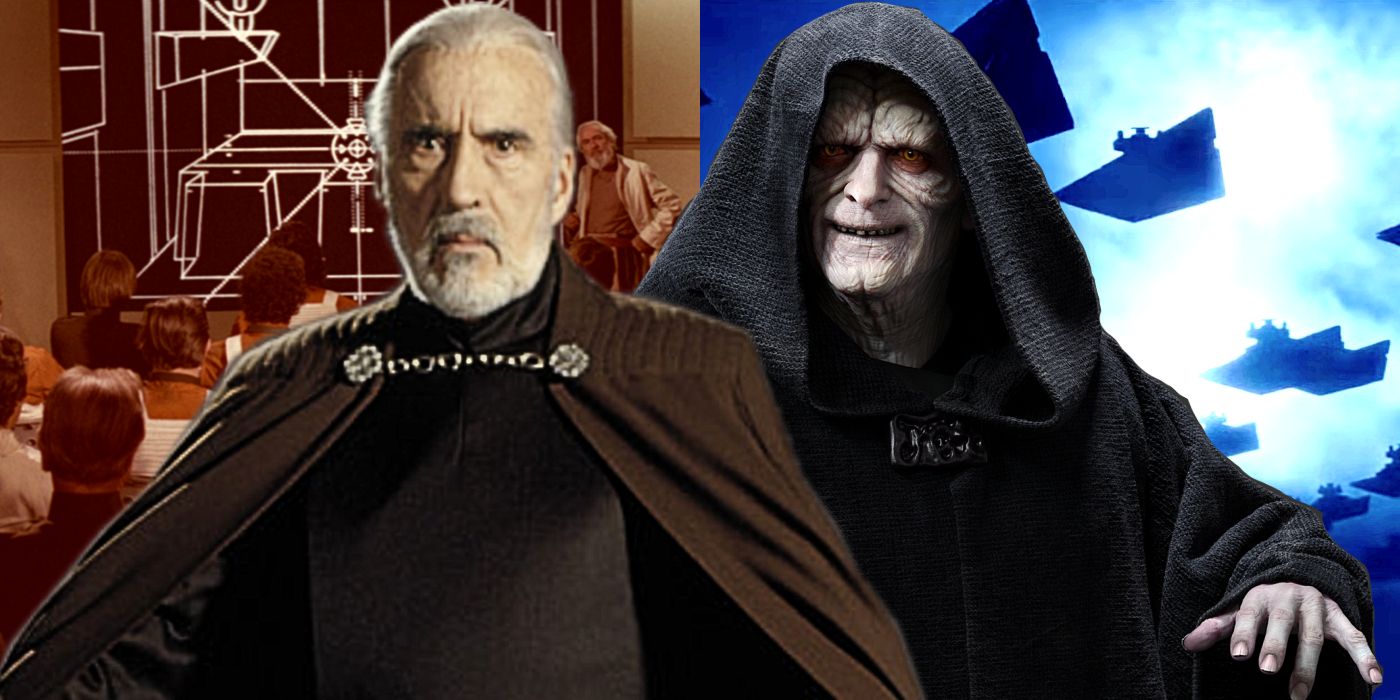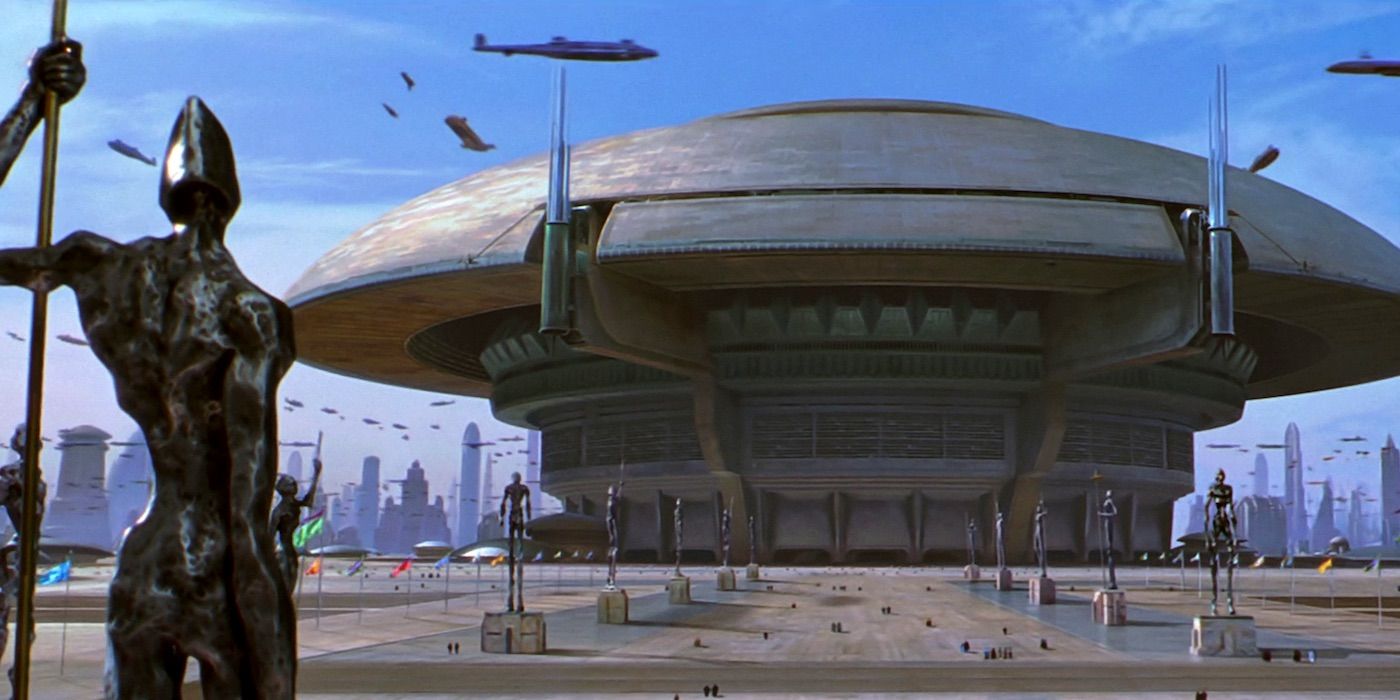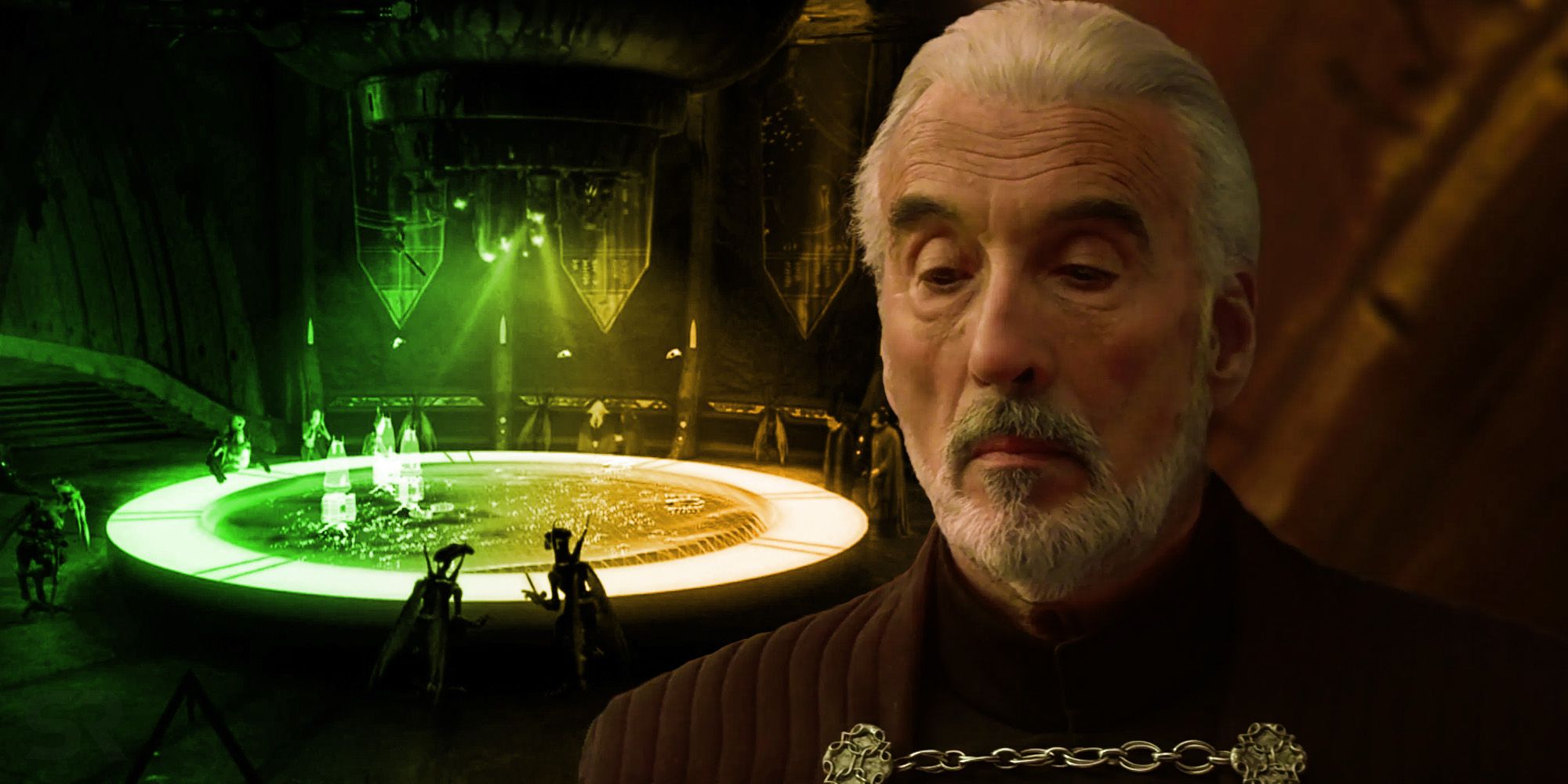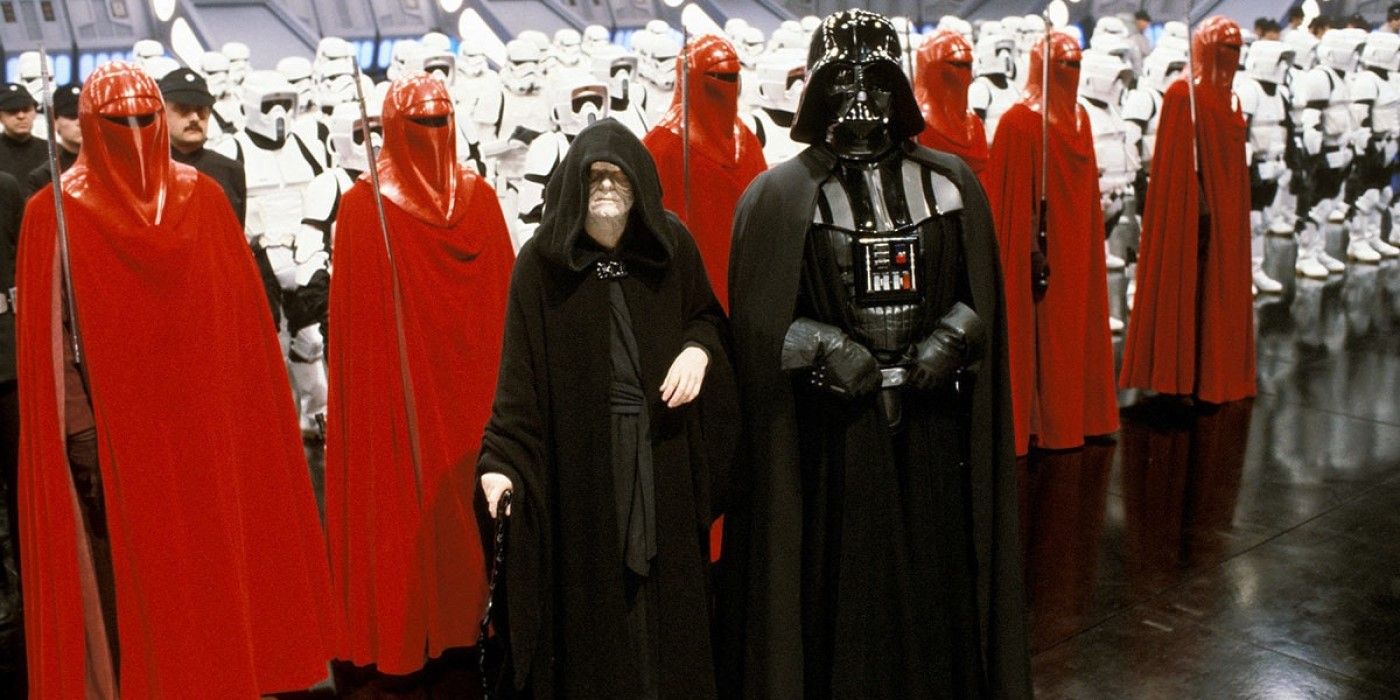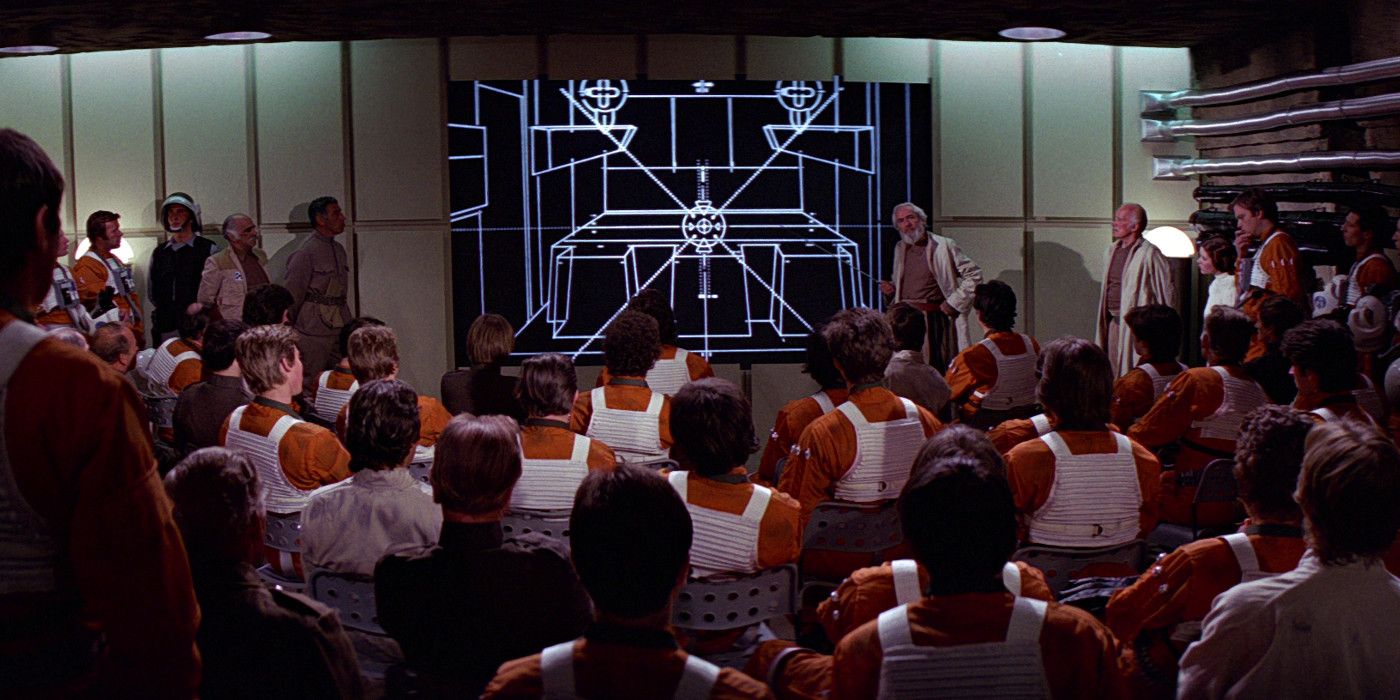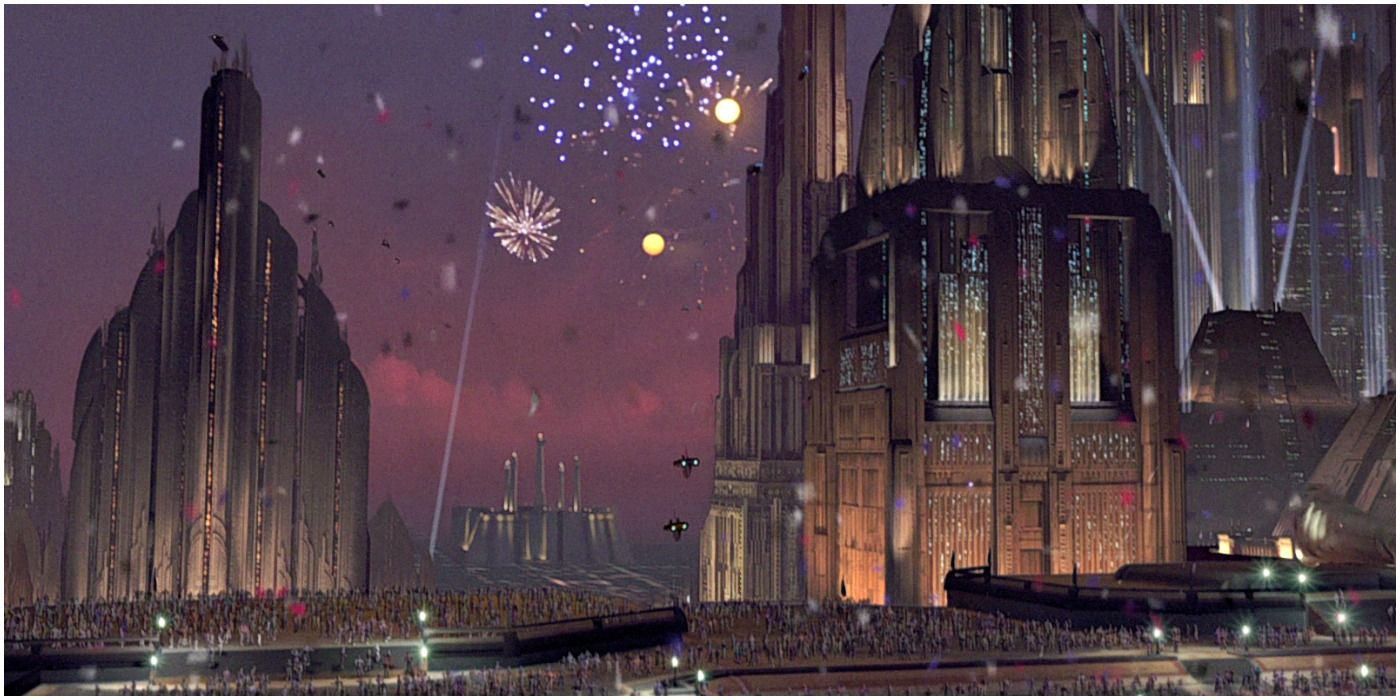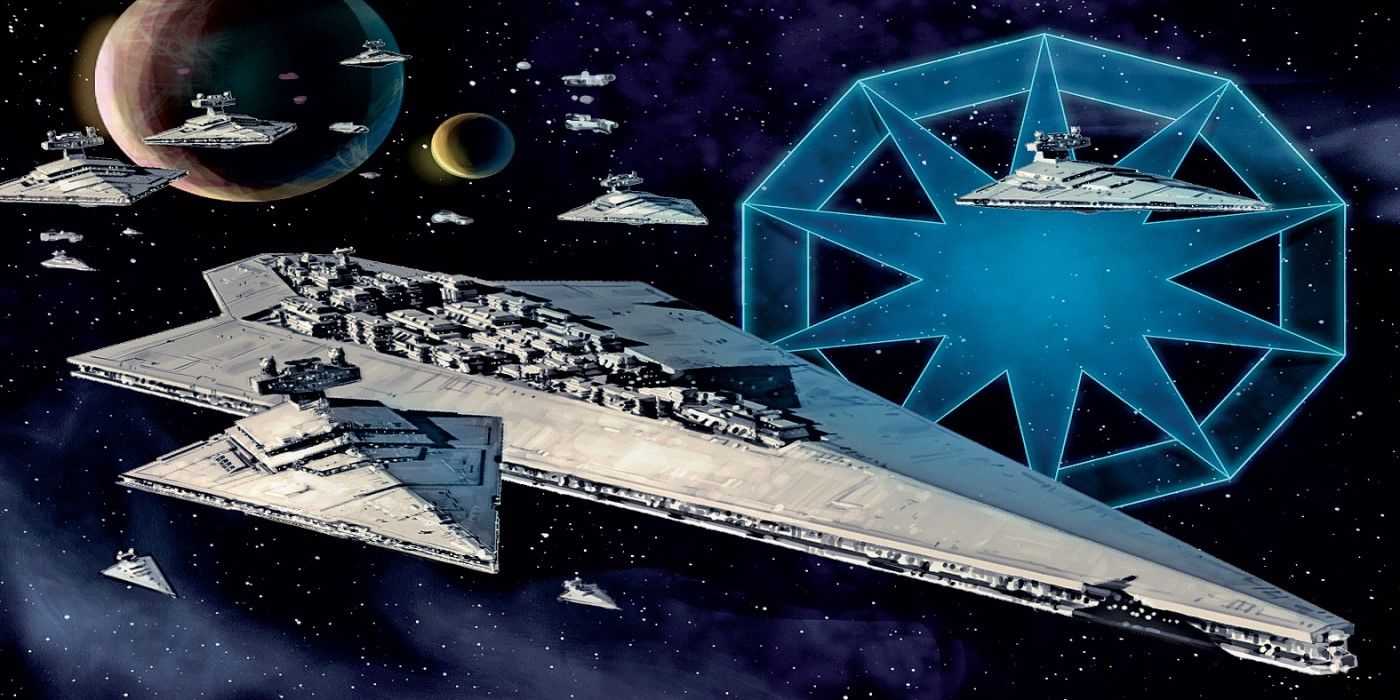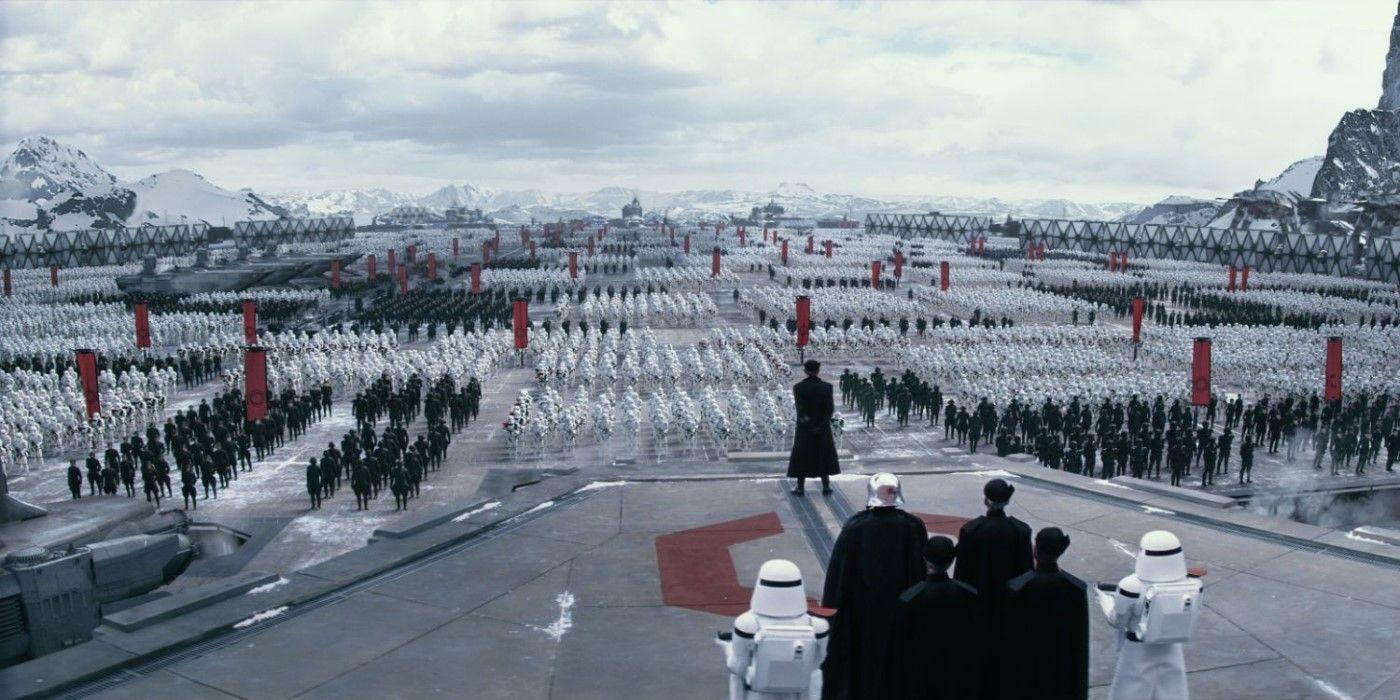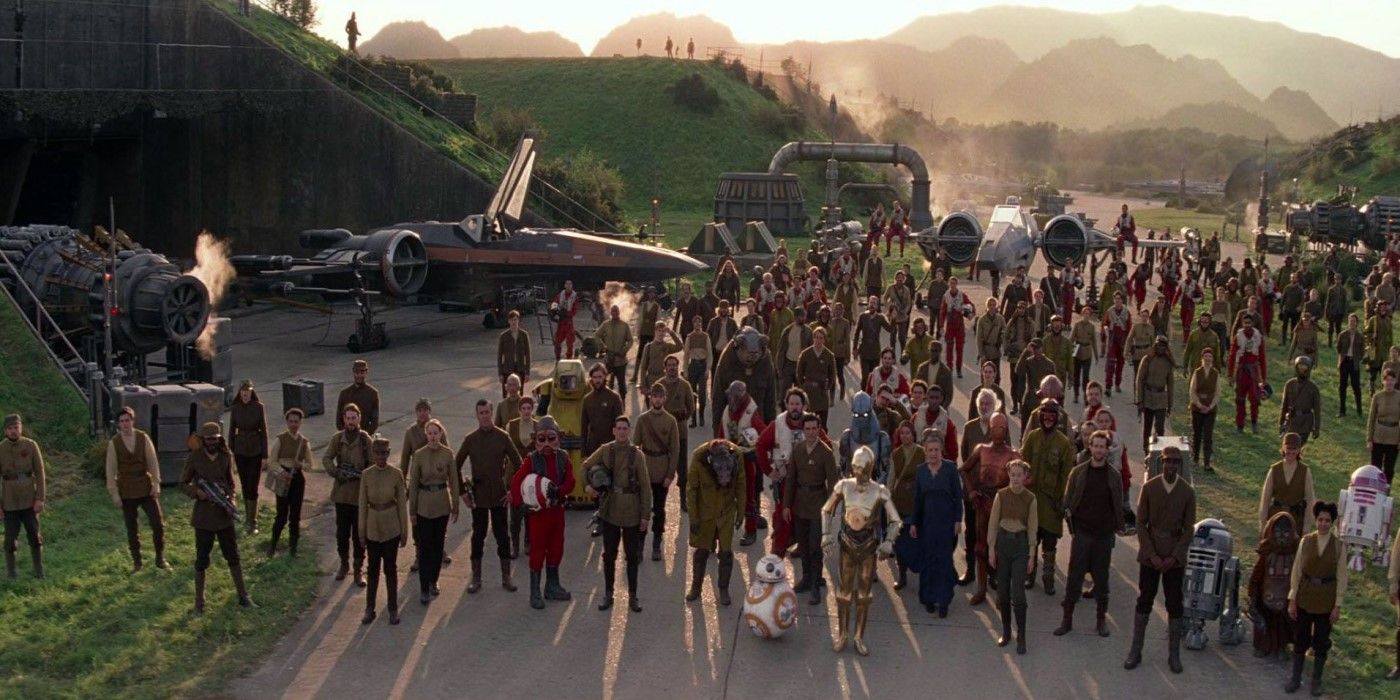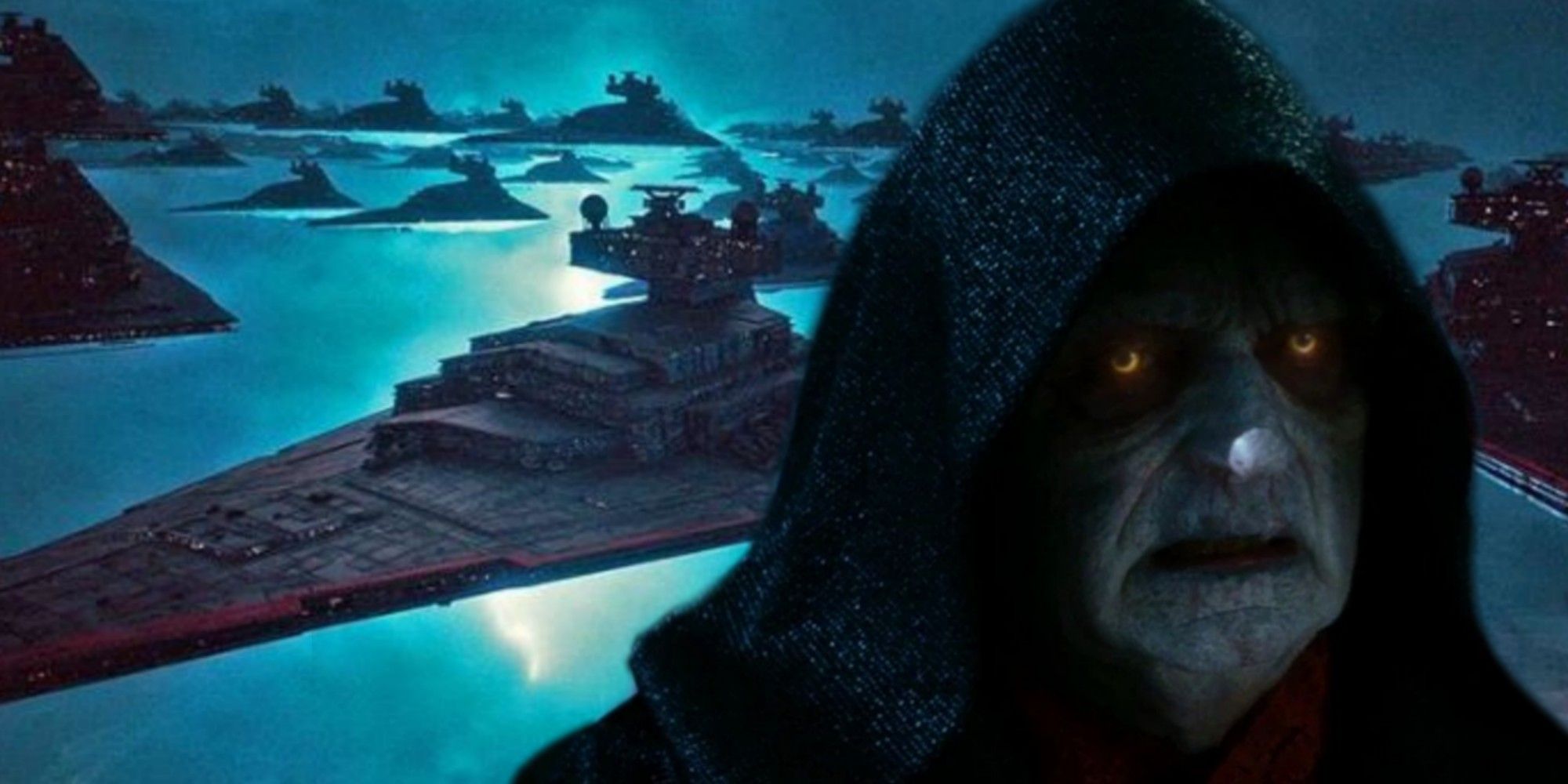Each era of the Star Wars Skywalker saga is defined by a conflict between two major factions, but how many of these factions are there in total? The original trilogy centered on the Galactic Civil War, where the Rebel Alliance sought to free the galaxy from the Galactic Empire. The prequels saw the buildup, ignition, and devastating ending of the Clone Wars, between the Galactic Republic and the Separatists. The sequels saw the resurgence of Imperial and Sith ideology in the form of the First Order, leading to the creation of The Resistance and their subsequent war with the First Order. Non-movie material in both the Canon and Legends continuities showed the Rebellion reform itself into the New Republic, and the Empire degrade into Imperial Remnant factions.
One of the core thematic elements of both Star Wars continuities is the conflict between democracy and authoritarianism. Palpatine didn’t conquer the galaxy through brute force. Instead, he gradually twisted the Republic into the authoritarian Empire and convinced its populace to support the coup. Using the Jedi as a scapegoat, he framed the order as the architects behind the Clone Wars (in truth, his machinations as the Sith Lord Darth Sidious), stoking the fires of xenophobia and portraying himself and the Republic’s citizens as victims of a Jedi conspiracy. Long after Palpatine’s apparent death during the Battle of Endor, the cult-like supporters of his ideology kept the Empire’s oppression alive and well long after the Rebellion’s decisive victory.
The heavy focus on politics was one of many aspects of the prequel trilogy that viewers criticized, but it ultimately added context to the original trilogy and nuance to the lore of both continuities. The original trilogy itself kept things simple: the heroes sought to overthrow a fascist state and reinstate democracy. The politics of the sequel trilogy and non-movie material set after the original trilogy dealt with the reestablishment of democracy and the lingering ideology of fascism, which wasn’t helped by the literal resurrection of their leader in both continuities. The Star Wars franchise is renowned for its lore and world-building, and the politics of all eras helped reinforce the immersion.
Galactic Republic
Founded over 25,000 years before the events of the Skywalker saga, The Galactic Republic governed most of the known galaxy as a representative democracy. For over a thousand years before the saga, the Republic and the Jedi Order worked together to unite the galaxy, successfully maintaining peace after the apparent destruction of the Sith. Despite its noble intentions, the Republic was not without its flaws. By the timeframe of Star Wars: Episode I - The Phantom Menace, the Republic had become corrupt, representing the whims of lobbyists rather than its citizens and using the Jedi Order as its paramilitary force. This played perfectly into the plans of Darth Sidious who, as Senator Palpatine, took advantage of the Invasion of Naboo and the Clone Wars (both crises he secretly orchestrated) to first become the Supreme Chancellor and then Emperor, blaming the Jedi for the Republic’s woes and enacting the Great Jedi Purge in an attempt to eradicate them.
Confederacy of Independent Systems/Separatist Alliance
Officially founded by the former Jedi Count Dooku (now the Sith Lord Darth Tyrannus), the Legends-era Confederacy of Independent Systems was a Separatist movement who felt that the Republic’s bureaucracy and corruption left it beyond repair and that it was time to establish a more laissez-faire government to allow planets and sectors to manage themselves their way. In truth, the CIS was a corporate oligarchy, ruled by a cabal of the galaxy’s most unscrupulous tycoons and greedy politicians, making it far more corrupt than the Republic it seceded from.
The power behind the Separatist Council and Count Dooku, however, was Darth Sidious, who successfully created the perfect threat to the Republic, forcing them to give him ever-increasing amounts of emergency power. In addition to blaming the Jedi for manufacturing the CIS, Palpatine also used them long after their defeat to discredit the Rebel Alliance as a resurgence of the Separatist movement. In Canon, the CIS was generally referred to as the Separatist Alliance, and unlike Legends, it had a capital world (Raxus) with a Separatist Parliament to represent its member worlds. Unknown to the senators, however, this was functionally little more than pretense, as the Separatist Council and the Sith Order were the true leaders of the Separatist Alliance.
Galactic Empire
As the result of Darth Sidious’s plans coming to fruition, the Galactic Empire was a fascist dictatorship ruled by Sidious as Emperor Palpatine. Much of the galaxy was under the dystopian rule of the Empire, who brought the Jedi to near-extinction via the Jedi Purge. The Empire maintained the pretense of a legislative body through the Imperial Senate, but once it finished construction of its planet-destroying Death Star battlestation, it quickly dissolved the senate. The Empire’s true intention was to keep planets subjugated through fear of the Death Star’s destructive power. When the Rebellion destroyed the Death Star at the Battle of Yavin, the Empire was quick to build another, since the superweapon was essential to their ruling philosophy. Just as the destruction of their Death Stars decapitated their governing policy, the apparent death of Palpatine at the Battle of Endor fractured the Empire.
Rebel Alliance
The earliest iteration of what would become the Rebel Alliance was the Delegation of 2000, a group of Republic politicians who witnessed their government’s gradual march towards authoritarianism during the Clone Wars and hoped to repair its democracy before it became too late. Needless to say, they were unsuccessful, but throughout the Empire’s reign, they formed rebel cells (or connected with already-existing ones), eventually coalescing into the Rebel Alliance, a movement that sought to overthrow the Empire and restore democracy. The Empire’s destruction of Alderaan showed the galaxy their unbridled cruelty. The Rebellion’s subsequent destruction of the first Death Star proved their legitimacy as well. As a result, the Rebel Alliance’s supporters flourished, and after three years of full-scale war, they destroyed the Second Death Star, fracturing the Empire and allowing them to reorganize themselves as the New Republic.
New Republic
With Palpatine seemingly dead at the Battle of Endor and the Empire in chaos, the Rebel Alliance quickly re-established itself as the New Republic as it continued its war against the weakened Empire. In Legends, the New Republic was in many ways a rebuilt Old Republic, though it avoided many of the pitfalls that left it vulnerable to the Sith’s authoritarian coup. The Legends-era New Republic was also rarely at peace, fighting the Empire in its various forms for fifteen years before they finally surrendered in 19 ABY. Starting with the election of Borsk Fey'lya as Chief of State in 23 ABY, the New Republic gradually fell back into impotence and corruption similar to the last days of the Old Republic. Towards the end of the Yuuzhan Vong War, the New Republic reformed itself once more, evolving into the Galactic Federation of Free Alliances.
In Star Wars canon, the New Republic’s war with the Galactic Empire only lasted roughly a year. With the Empire formally surrendering after the Battle of Jakku, the New Republic quickly demilitarized and became a government more akin to a confederacy than its Legends-era counterpart. Over time, the New Republic became increasingly divided, with two political parties, the Centrists and Populists, fighting amongst each other and deteriorating the government’s effectiveness. An alarming amount of the Centrist party’s members were privately supportive of the old Galactic Empire and eventually joined the fascist extremist group known as the First Order. The New Republic as a whole failed to take the First Order seriously, an oversight that cost it dearly. When the First Order used its planet-destroying superweapon, Starkiller Base, to annihilate the Hosnian system, the New Republic was effectively destroyed.
Imperial Remnant
In Legends, the Galactic Civil War was far from over when the Emperor seemingly died at the Battle of Endor. Without his leadership, however, the Galactic Empire fractured into various sub-factions, each led by an Imperial warlord who controlled portions of the Empire’s territory. The Imperial warlords fought amongst themselves almost as often as they did against the New Republic, but attempts at unity were made. Notably, Grand Admiral Thrawn nearly unified the Imperial warlords under his rule during the Thrawn Campaign, Thrawn’s death at the Battle of Bilbringi led to the Empire’s fragmentation once more and the in-fighting resumed.
Palpatine himself returned from the dead, revealing a hidden backup portion of the Empire in the Deep Core. With an arsenal of nightmarish military forces and superweapons, Palpatine brought the remaining Imperial forces under his command once again, forming the Dark Empire and attacking key New Republic strongholds during Operation Shadow Hand. After Palpatine’s final death on Onderon, the Dark Empire eventually reformed into the Imperial Remnant, a military oligarchy under the command of Gilad Pellaeon. The Imperial Remnant continued to wage war against the New Republic until it formally surrendered in 19 ABY with the signing of the Pellaeon–Gavrisom Treaty.
In Star Wars canon, Imperial remnant factions are similar to the Legends-era Imperial warlords, albeit far smaller and less dangerous. Officially, the Galactic Empire continued to exist after its surrender, though it was largely demilitarized and confined to limited portions of the Inner Rim and Core Worlds. Unofficially, former ISB members, such as Moff Gideon, established bases throughout the galaxy attempting to destabilize the New Republic and re-establish themselves as the galaxy’s foremost regime.
First Order
Following the Battle of Jakku, Imperial military forces who fled to the Unknown Regions combined with Imperial remnant factions and members of the New Republic’s Centrist party to form the fascist military junta known as the First Order. With a massive military force, the Knights of Ren, and a new superweapon at their disposal, the First Order destroyed the New Republic and used the ensuing chaos to begin their conquest of the galaxy. Like real-world fascist regimes, the First Order glorifies the past, seeking to return the galaxy to a new iteration of Imperial rule. Ultimately, the First Order was the public “face” of Darth Sidious’s contingency plan to return and subjugate the galaxy.
Resistance
Recognizing the ever-growing danger of the First Order and the New Republic’s failure to properly fight against it, Leia Organa and her many like-minded New Republic and former-Rebel allies created the private military force known as the Resistance. Unlike the Rebel Alliance, which sought to overthrow the Empire and reestablish democracy, the Resistance was created to stop the spread of the First Order and fight the battles that the New Republic proved unable to. Unfortunately, without the full support of the New Republic, the Resistance wasn’t nearly as large or well-equipped as the Rebellion. When the New Republic fell following the destruction of the Hosnian system, the Resistance became the galaxy’s last line of defense against fascism.
Sith Eternal/Final Order
Headquartered on the Unknown Regions world of Exegol, the Sith Eternal was a cult of Sith-worshippers, who helped resurrect Darth Sidious after the Battle of Endor and built a force made of the newest and deadliest iterations of the former Empire’s military. In 35 ABY, the Sith Eternal combined with the First Order, creating the Final Order. Like the Legends-era Dark Empire, the Final Order was no longer concerned with any pretense of subtlety or deception, seeking to reconquer the galaxy under Sith oppression. Like the Dark Empire, the Final Order was an authoritarian theocracy who sought to rule through fear as the old Empire did. The final film in the Star Wars Skywalker saga ends with the destruction of the Final Order and the final death of Palpatine.

